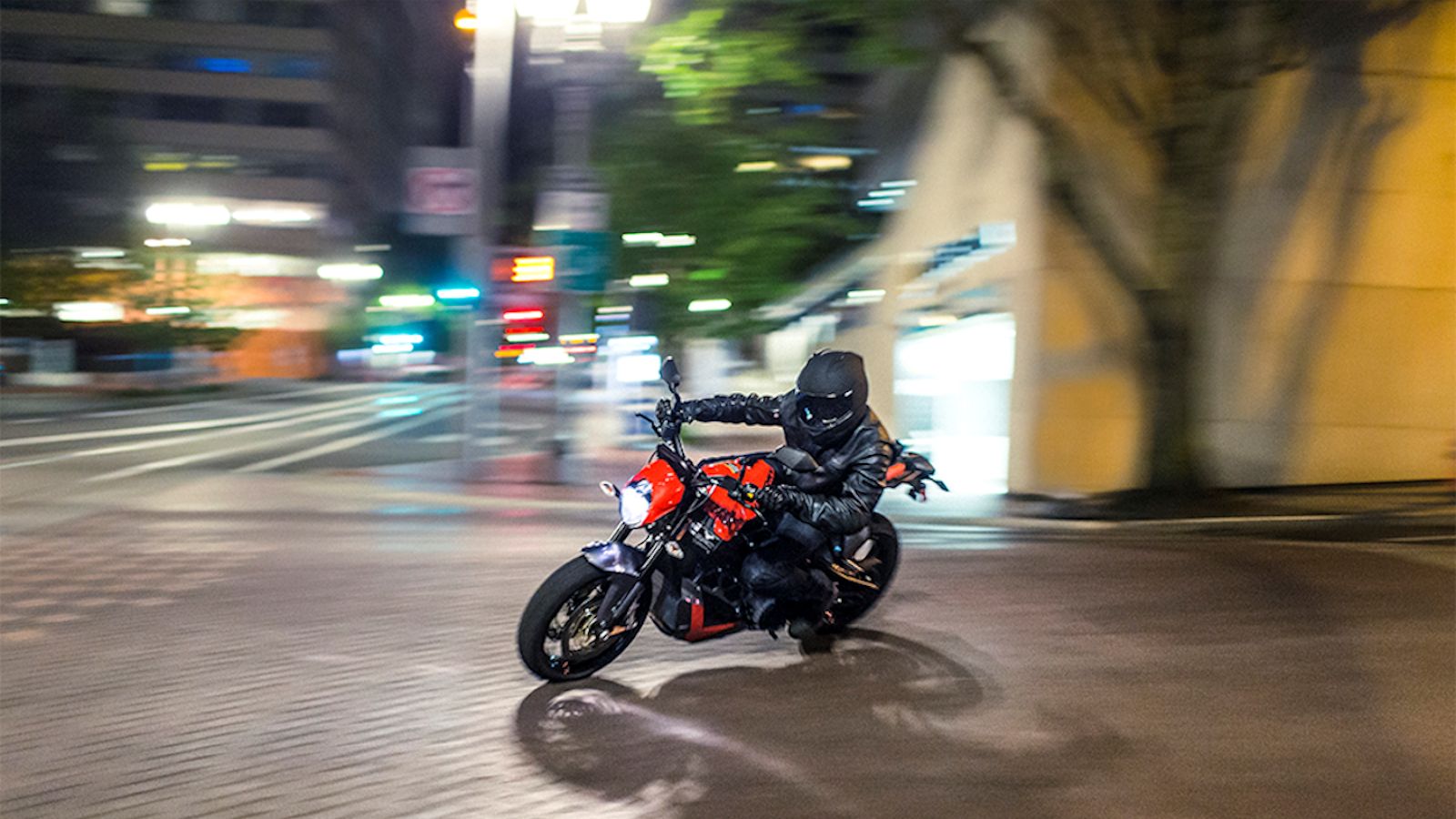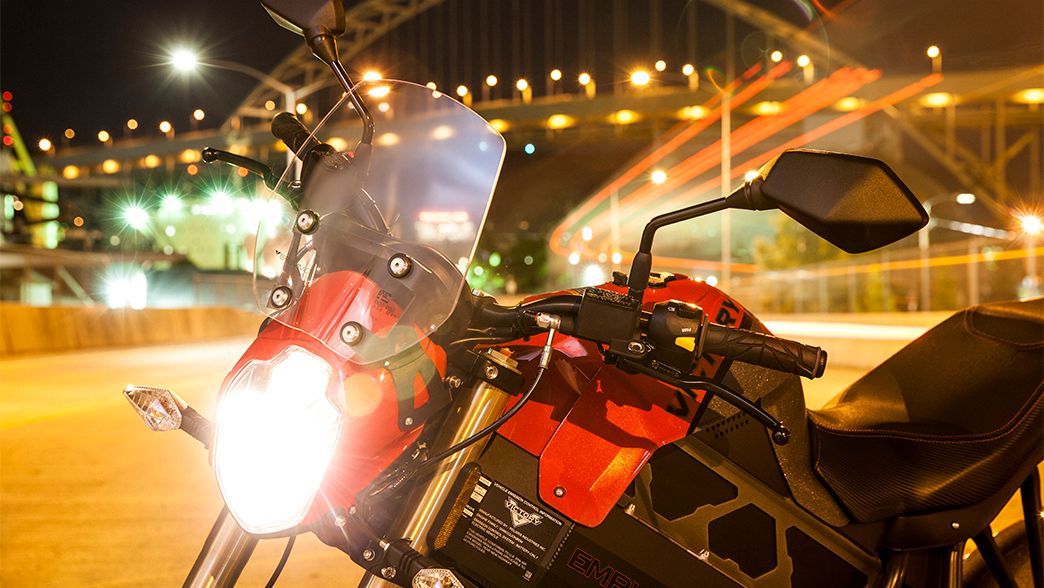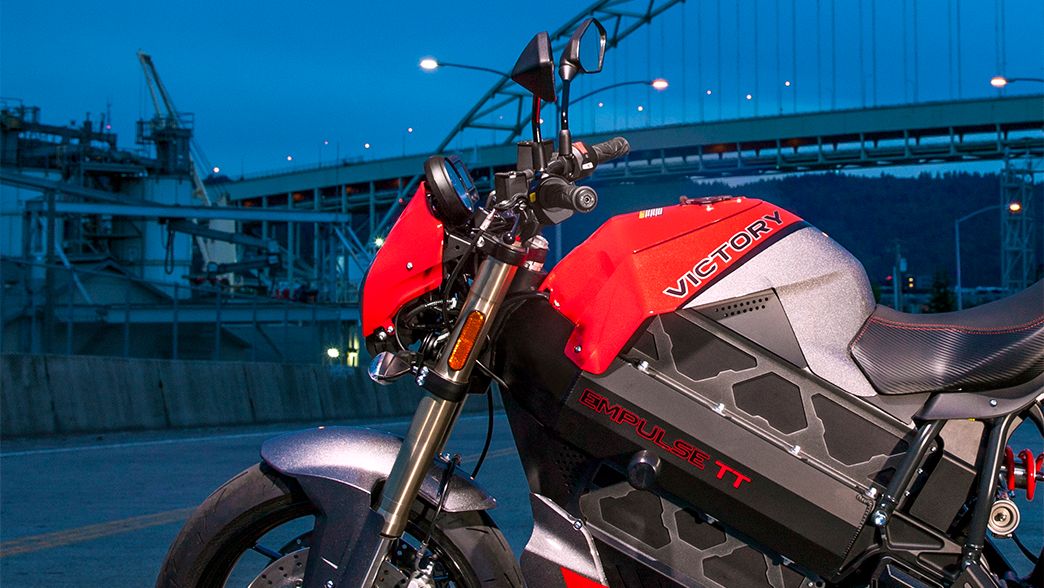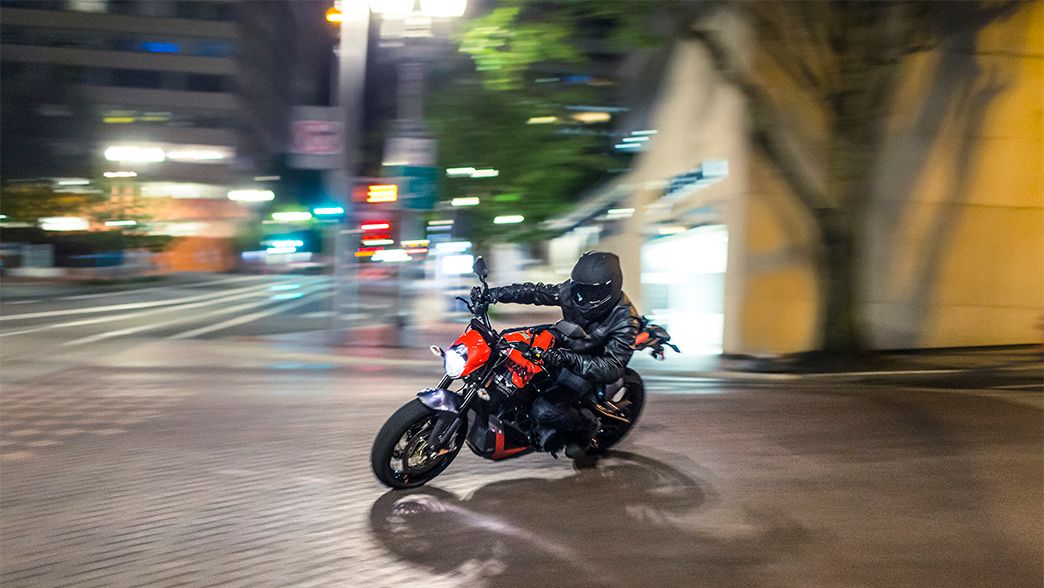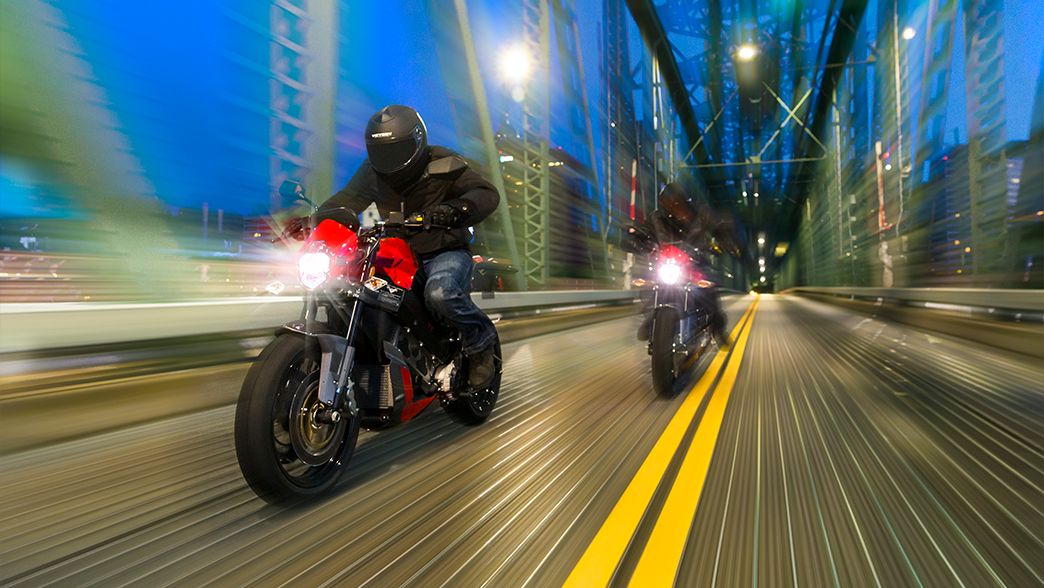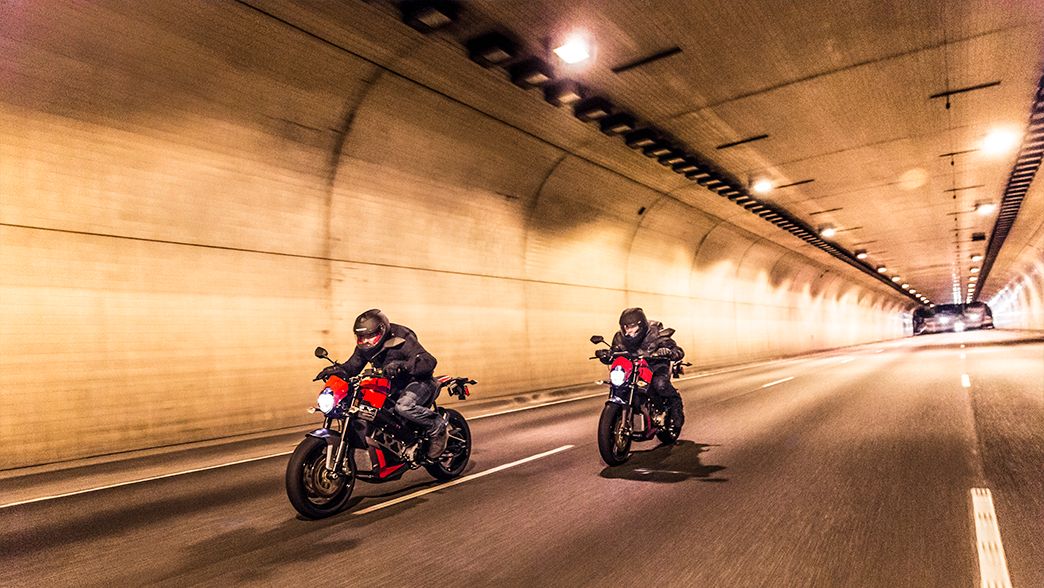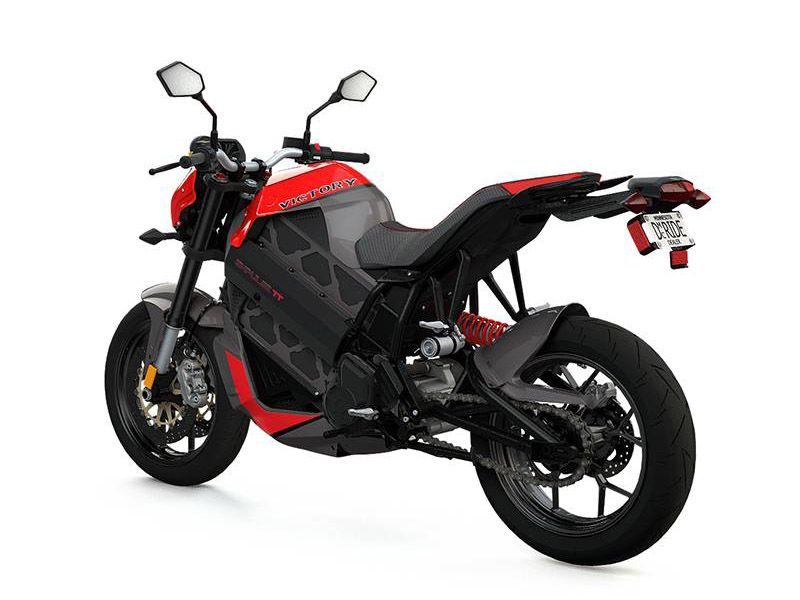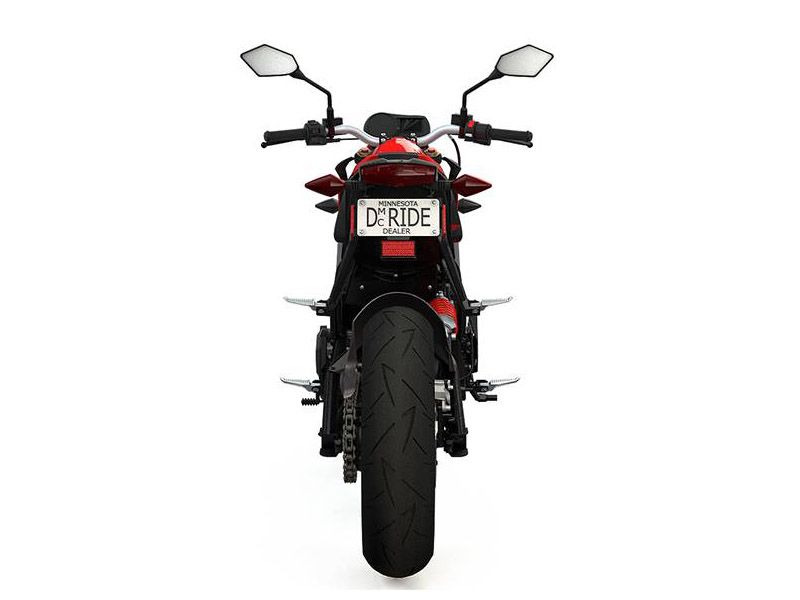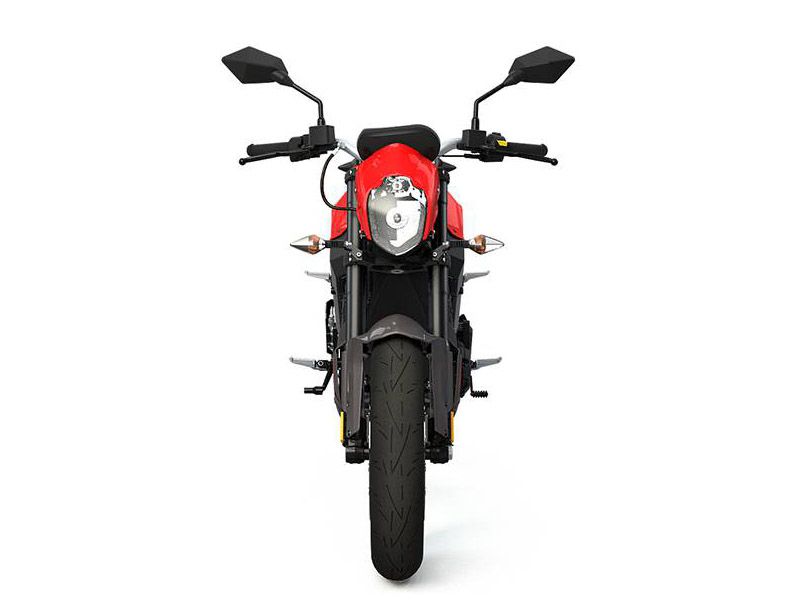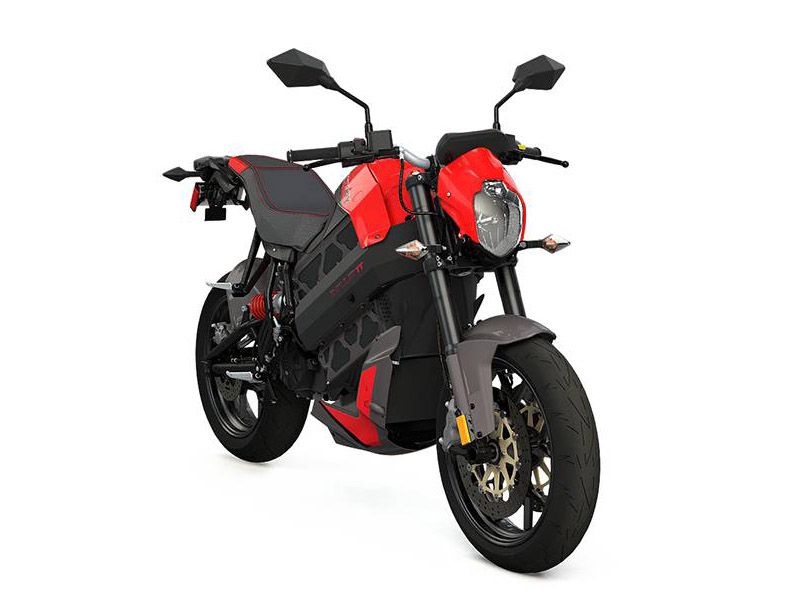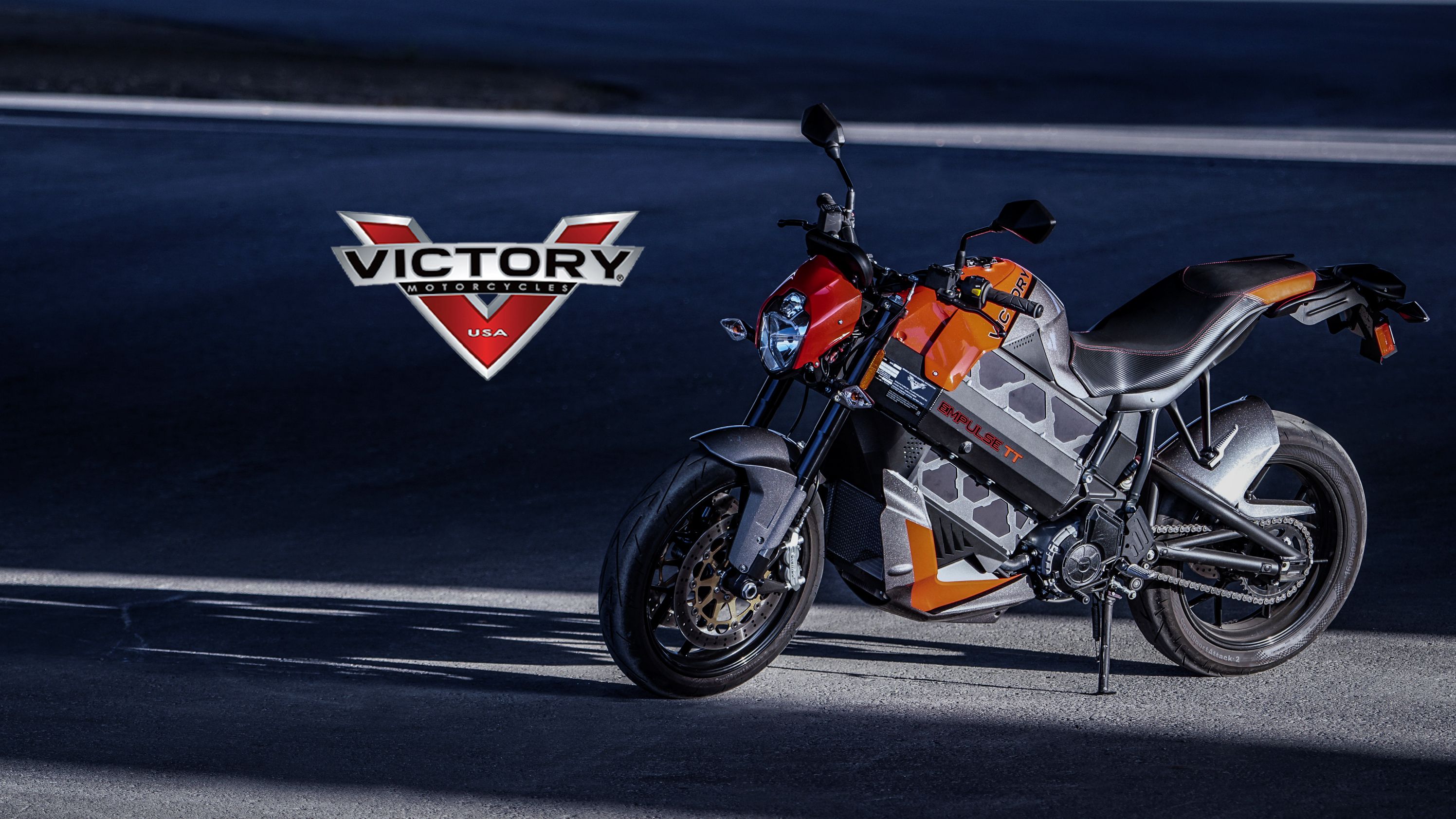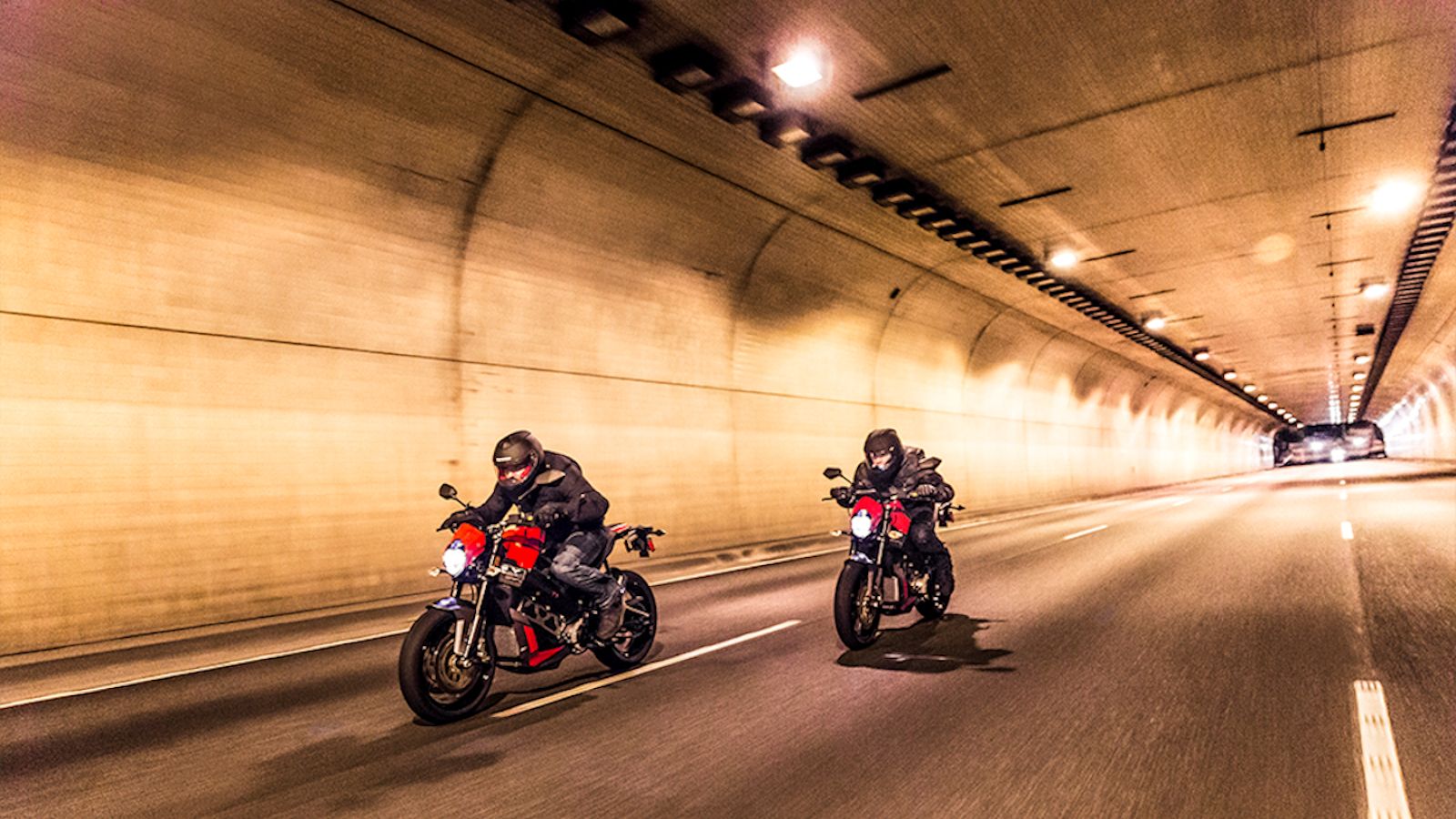Polaris->ke4818 Industries Inc. owns quite a few subsidiaries, and it recently added to them with the acquisition of electric bike manufacturer Brammo->ke3399 in 2015. Since Victory->ke1801 already serves as Polaris' progressive-cruiser->ke392 branch (as opposed to the nostalgic Indian->ke3292 designs), it seems a natural pairing to put the two together. Instead of starting from scratch, Victory adopted the Empulse concept from Brammo to give us the 2016 Empulse TT. Folks, this ain't like the battery-powered toys we had as kids, or the slightly-better electric->ke3364 scooters->ke2256 and minibikes as of late, this is a real-world motorcycle that provides honest, practical service as a sustainable (read: green) form of basic transportation. While the technology hasn't advanced enough to make electric bikes as practical as internal combustion bikes, its coming along, and the roughly 100-mile range of the Empulse TT ain't exactly peanuts either – certainly enough for most daily commutes or weekend romps.
Continue reading for my review of the 2016 Victory Empulse TT.
victory-empulse-tt
- Make: Array
- Model: victory-empulse-tt
2016 Victory Empulse TT
- Make: Array
- Model: 2016 Victory Empulse TT
- [do not use] Vehicle Model: Array
Design
The Empulse remains largely unchanged from the original Brammo design, and so it still comes off as a straight-up, naked streetbike with lines typical of current Japanese and European streetbike models – all up front with a waspish waist and zero junk in the trunk. Rider-triangle layout puts the pilot in an aggressive, forward leaning position that puts the body over the center-of-mass and in good position to shift the body for carving corners. While the rear end leaves nothing to the imagination, body panels over the lithium-ion battery and drivetrain keep the operative innards a mystery. Probably just as well, I doubt there is any way to make an electric motor and battery look sexy.
The headlight is nestled away in what could be considered the merest suggestion of a fairing leaving a minimal impact on the front, and small, diamond-shaped turn signals on short standoffs keep the bike looking clean. Saddle construction leaves a gentle transition from pilot to pillion, and it adds a certain grace to the upper lines once you get past the fake fuel tank bump.
Chassis
An aluminum frame keeps things nice and light, but strong enough to do the job. The steering head is set at 24 degrees to give us 3.8 inches of trail, with a 58-inch wheelbase, which is where the bike gets its responsive steering and willing attitude. Ground clearance and seat height are middle-of-the-pack at 7.3 inches and 31.5 inches, respectively, so it should fit the majority of riders out there.
A set of adjustable, 43 mm, inverted front forks support the front end. Under Brammo, these would have been Marzocchi forks, but I happen to know that Marzocchi just folded their two-wheel suspension production. Maybe Victory has a new supplier, or maybe its using up old stock before making a move. Whatever the case, the front forks and rear coil-over monoshock come fully adjustable and easy to access for quick tweaks.
Victory wasn't afraid to put some brakes on this ride, and it shows. The factory threw dual, 310 mm discs with four-pot calipers on the front, and a twin-pot caliper on the rear – all from the top-shelf brand, Brembo. It also added a “regenerative braking” function meant to harness a portion of your kinetic energy during engine braking, and revert it back into electricity so as to waste as little power as possible. There is no ABS available at all for this ride, but I'm ok with that.
Drivetrain
The magic that is the drivetrain starts with the Brammo Power lithium-ion battery. This little gem can store 10,400 watt-hours of juice at up to 117.6 volts. Power flows from the battery to the permanent-magnet, alternating-current (AC) motor, and though the factory touts a range of 100 miles on one full charge, realistic riding conditions and practices actually limit the range to about 85 miles. Good news here is you can charge the battery in a level-two station in just 3.9 hours, and in a level-one station in 8.9 hours, so you can quickly recharge while you are at work (or whatever).
Peak output from the motor is 54 ponies and the peak torque output is 61 pound-feet, which may seem a little low, but consider that the torque comes on as soon as you crack the throttle. I mean as soon as you roll on, its there, and that counts for a lot.
Unlike some of the other electric streetbikes out there, the Empulse uses a six-speed transmission in the same way a “smoker” engine does – sort of. Remember the torque behavior I mentioned? Well, Victory recommends you drive around town in third gear all the time, even from takeoff. I'm sure it helps save power, but that makes it a dog out of the hole. Act like you are on a “regular” bike and start out in first, and it becomes a completely different animal. It leaps into the holeshots and has an authoritative roll on, especially with the economy mode turned off, but you will pay for that fun with a reduced range.
Competitor
While the electric streetbike market isn't exactly flooded yet, if you know what I mean, we do have a relatively close competitor in most of the important categories in the S ZF9.4 from Zero->ke3362. Let's look at how they stack up.
Motor performance leaves little to choose between the two. Zero comes out on top with 54 ponies and 68 pound-feet and Victory is close behind with the same 54 horsepower, but only 61 pound-feet of torque. I doubt those few pound-feet make as much difference to performance as the fact that while the Empulse has a transmission, the Zero uses a direct drive with no shifting. I'm sure there are benefits to both systems, but I would prefer the traditional feel of shifting a tranny over a “twist it and forget it” riding style. Bottom line on the top end sees Victory on top with a max speed of 100 mph over 95 mph from the Zero.
To me, range is the most important factor once performance is established, and both contenders have around 100 miles in the “tank,” depending upon riding style and whether it's a city or highway commute, of course.
Both bikes use lithium-ion batteries with similar capacities, but the Zero has a multiple-charger setup that allows you to slam a full charge in the batter in a mere 1.9 hours – far shorter than the 3.9-hour partial-charge time on the Empulse.
The biggest difference between the two seems to be the price. While the Empulse goes for $19,999 MSRP, which is comparable to similarly-sized smoker bikes, the ZF9.4 sneaks in at just $11,995, quite a big difference for such similar looks and capabilities.
Price
You can score the Empulse TT for $19,999, but you had better like red and gray paint schemes. While I'm not surprised at the price, I am disappointed that it's priced out of the entry-level range. I have a life-sized picture of this as an around-campus-and-town bike for short commutes, but the sticker might be prohibitive for most college-age folks.
He Said
“I love seeing more and better practical applications of green technology, and feel like I can safely say that the future is now – almost. Electric vehicles keep getting better, and the Empulse is a great example of how far the industry has come, and that just in my lifetime! I can't wait to see what we have in another decade or so.”
She Said
My wife and fellow writer, Allyn Hinton, says, "The Empulse TT isn't the fastest and most awesome electric bike out there. It's not even close to the Ego from Energica->ke4817, but it's a great scoot-around-town bike. I agree with my husband in that it is priced a little steep for entry level, though that's really where the bike is in performance and handling. Tall folks -- maybe six feet or taller -- might feel like they're a little big for the bike, but don't let that deter anyone from picking up one of these as a 'green' commuter."
Specifications
|
Battery: |
Brammo Power Lithium Ion |
|
Battery Capacity: |
10,400 Watt-Hours |
|
Battery Voltage: |
103.6 Volts / 117.6 Volts (Max) |
|
Motor Type: |
Internal Permanent Magnet AC |
|
Charging System: |
3.9 Hours (Level II / 0 TO 100 percent SOC) - 8.9 Hours (Level I / 0 TO 100 percent SOC) |
|
Drive/Driven Clutch: |
Hydraulic Activated Wet Clutch |
|
Transmission Type: |
Six-Speed Gearbox with Multi-plate |
|
Emissions: |
None |
|
Front Suspension: |
Adjustable 43 mm Inverted Forks |
|
Rear Suspension: |
Adjustable Direct-Acting Shock |
|
Peak Power: |
54 Horsepower |
|
Peak Torque: |
61 Pound-Feet |
|
Maximum Speed: |
100+ mph |
|
Front Brakes: |
Dual 310 mm Brembo Floating Discs with Twin Four-Piston Radial-Mount Brembo Brake Calipers |
|
Rear Brakes: |
Brembo Single Disc with Dual-Piston Hydraulic Brembo Brake Caliper |
|
Brake System Type: |
Regenerative Braking - Extend Driving Range and Provide Familiar Rider Feedback |
|
ABS: |
Not Equipped |
|
Front Tire: |
Continental Sport Attack II 120-70 ZR17, 58W |
|
Rear Tire: |
Continental Sport Attack II 160/60 ZR17 69W |
|
Front Wheel: |
17 inches X 3.5 inches |
|
Rear Wheel: |
17 inches X 4.5 inches |
|
Ground Clearance: |
7.3 inches |
|
Rake/Trail: |
24 degrees/3.8 inches |
|
Seat Height: |
31.5 inches |
|
Wheelbase: |
58.0 inches |
|
Overall Length: |
81.3 inches |
|
Carry Capacity: |
368 Pounds |
|
Dry Weight: |
470 Pounds |
|
Instrumentation: |
LCD Display; Speed, Tach, Odometer, Gear Position, Energy Consumption, Battery Status, Estimated Range and System Status |
|
Color: |
Titanium Silver and Havasu Red |
|
Price: |
$19,999 |

